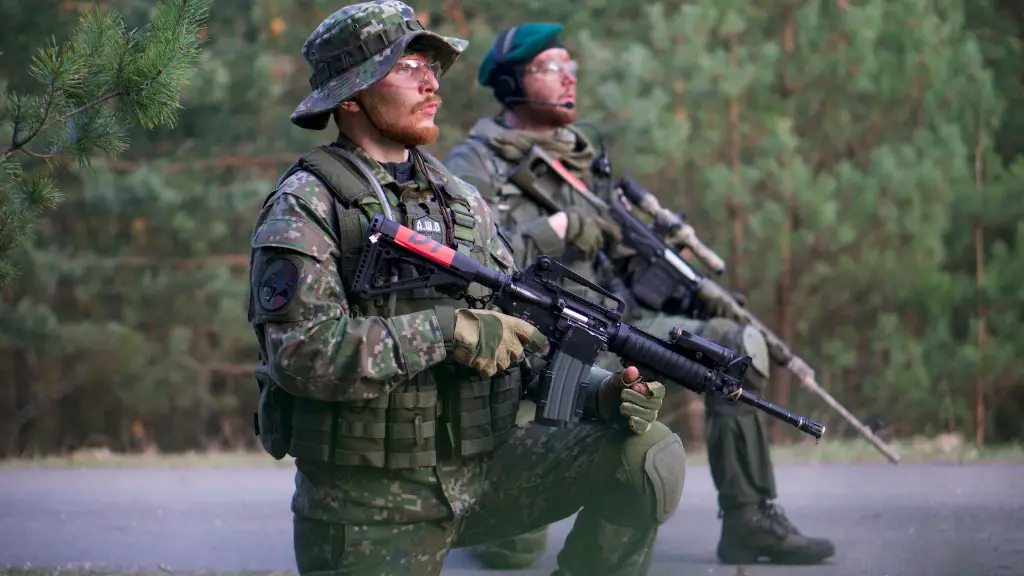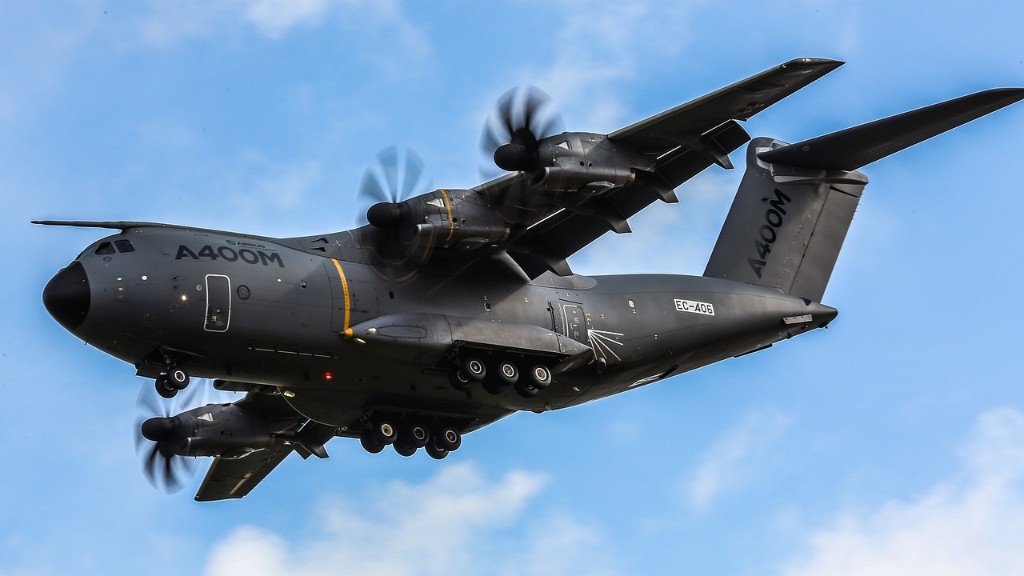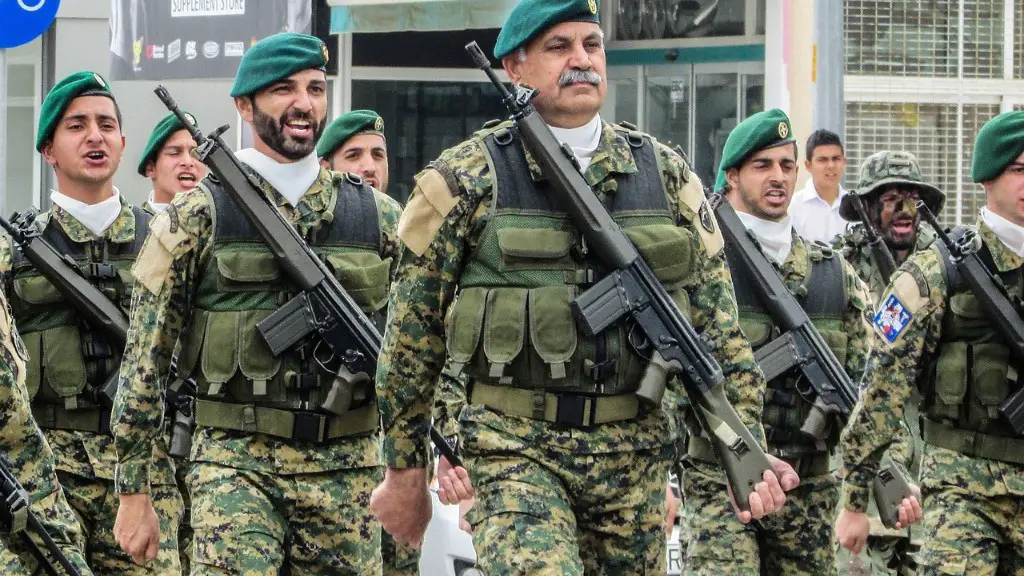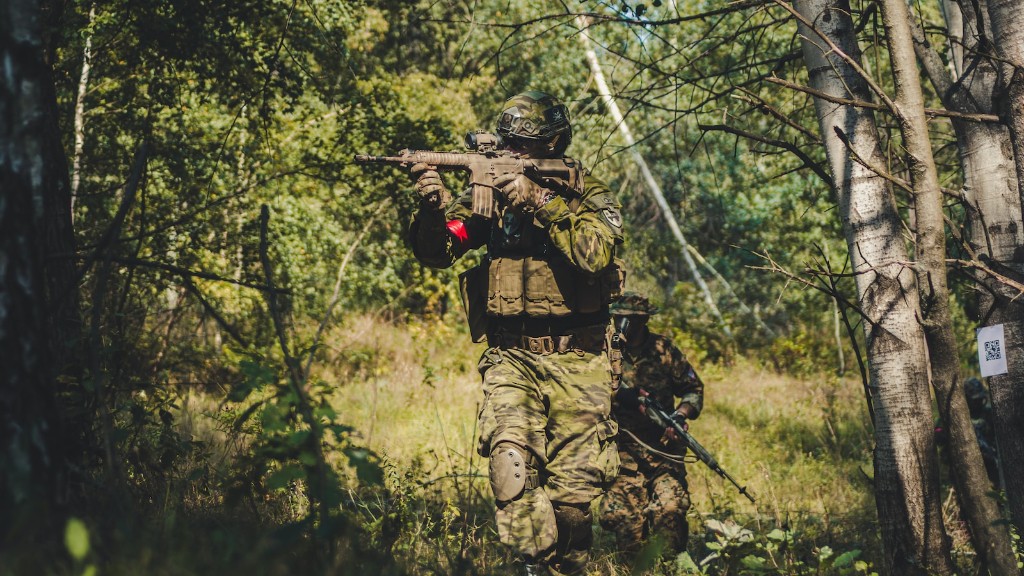The People’s Liberation Army of China is one of the largest military forces in the world, with an estimated 2.2 million active personnel. The stated goal of the PLA is to be able to defend the Communist Party of China’s vision of creating a prosperous and unified China. It is structured as a highly organized and complex military organization with branches in both the land-based and air-based segments of the military.
China’s military remains shrouded in secrecy, making it hard for outside observers to get an accurate assessment of its capabilities and what its plans might be for the future. However, it is widely believed that the Chinese military is rapidly modernizing and increasing in size and power. This is evidenced by China’s growing defense budget and its recent commitment to developing advanced weapons systems.
The Chinese military has traditionally been seen as a defensive force, with a focus on protecting its own borders and defending against external threats. However, in recent years, it has increasingly become a source of assertive power, particularly in terms of its influence in Asia-Pacific. China’s growing military presence in the South and East China Seas has caused tensions with its neighbors, particularly in the face of U.S. presence in the region.
The Chinese military is also becoming increasingly active in the realm of cyber warfare. Recent reports have shown that Beijing has significantly increased its hacking activities and cyber espionage against foreign countries. This has prompted some in the international community to call for a more unified and transparent approach to tackling cyber threats.
In addition, Chinese military modernization has been accompanied by an increased emphasis on building and deploying military forces to remote areas, including Tibet and the South China Sea. This strategy has been seen as part of an effort by the Chinese government to assert greater territorial control in these regions.
Finally, the PLA is one of the few military forces in the world to have its own space program, which has been used for both scientific and military purposes. The Chinese space program is seen as an important component of the PLA’s modernization efforts and an indication of its growing capabilities in the realm of space exploration.
The PLA Navy is one of the most important branches of the Chinese military. It is seen as a key component of China’s efforts to build a more powerful and assertive military presence in the Asia-Pacific. Recently, the PLAN has demonstrated its capability to deploy to more distant areas by sailing its aircraft carrier, the Liaoning, on several extended voyages. It has also conducted a number of show-of-force operations in the South China Sea, in which it has conducted a range of military exercises with other countries in the region.
In terms of size, the Chinese Navy is one of the largest in the world, with over 300 ships and submarines. It is also seen as one of the most powerful, with advanced warships and missile systems. This includes its recently developed nuclear-powered submarine, the Type 094.
In addition, the Chinese Navy has increased its outreach activity in the region, with it maintaining a regular presence in the Indian Ocean and participating in a wide range of international military exercises. These activities have helped China to build links with other countries in Asia-Pacific, as well as establish its capability to project power beyond its shores.
The Chinese Navy has also increasingly become involved in peacekeeping operations and humanitarian assistance missions, in which it has used its naval strengths to provide assistance in crisis-hit regions.
The Chinese Navy is seen as a key element in the PLA’s modernization efforts, with it providing the capability to project power beyond China’s borders and defend its interests in the region.
Chinese Air Force
The PLA Air Force is the second largest branch of the PLA and one of the most powerful in the world. It is thought to have a total of over 8,000 aircraft, including fighter jets, bombers, reconnaissance, and transport aircraft.
In recent years, the PLA Air Force has become increasingly active in the Asia-Pacific region, conducting a number of long-range air patrols and military exercises in the South China Sea and elsewhere. Air operations such as these are seen as an important part of China’s efforts to project power beyond its borders and establish regional dominance.
In addition, the Chinese military has also increased its focus on developing and deploying advanced weaponry, such as its fifth-generation fighter jets and stealth bombers. This is seen as an important component of Beijing’s efforts to build a more modern, high-tech military.
Finally, the PLA Air Force is also increasingly important in the realm of peacekeeping missions, with it providing support in Africa, Asia, and the Middle East.
Chinese Space Force
China is one of the few countries in the world that has its own space program, which is managed by the PLA. This program has been used for both scientific and military purposes, with it launching satellites, manned spacecraft, and spacecraft elements for a range of purposes.
The Chinese space program is seen as an important component of the PLA’s modernization efforts, as it enables China to bring new capabilities and technologies into its military, such as surveillance and remote sensing. It is also seen as an indication of China’s growing capabilities in the realm of space exploration.
In addition, the Chinese space program is increasingly being used for military purposes, such as anti-satellite warfare and space-based warfare. This has raised concerns in the international community, with some countries accusing Beijing of developing technologies capable of disabling other countries’ satellites.
Finally, the Chinese space program is also seen as an important part of Beijing’s efforts to project power in the region and beyond, with it providing China with the capability to monitor events on the ground and detect potential threats.
Chinese Cyber Security
Cyber security is an increasingly important component of the Chinese military’s modernization efforts. In recent years, Beijing has significantly increased its cyber security capabilities, employing a range of technologies and tools to protect its networks and deter any attempts by hostile actors to infiltrate them.
The Chinese military is also increasingly active in the realm of cyber warfare, with it reportedly conducting successful cyber-attacks against foreign countries. This has prompted some in the international community to call for a more unified and transparent approach to tackling cyber threats.
In addition, Chinese military cyber security efforts are seen as an important part of Beijing’s efforts to assert greater control over its own networks and deter any potential foreign interference. This is especially important given the increasing levels of data sharing between China and other countries.
Finally, the Chinese military is also believed to be employing a range of advanced cyber tools, such as artificial intelligence, to both protect its own networks and build capabilities for offensive cyber operations. This is seen as an indication of China’s growing cyber warfare capabilities.
Chinese Military Modernisation
Modernization has been at the heart of the PLA’s transformation in recent years, with it deploying an increasing number of advanced weapons systems and building up its smaller but specialised branches. This includes investing in high-tech submarine and air craft technology, developing next-generation nuclear weapons, and advancing its cyber capabilities.
This effort has been reflected in China’s growing military budget, crossing the $200 billion mark in 2020. This has enabled China to acquire cutting-edge weapons and technologies and supported its military modernization efforts.
The Chinese military’s modernization efforts have also been accompanied by a shift in its approach to conflict. Increasingly, it has been seen as more assertive and willing to use force in order to protect its interests. This is in stark contrast to its traditional focus on maintaining a defensive posture.
Finally, the Chinese military’s modernization efforts are seen as an important part of Beijing’s efforts to build a global power. By developing advanced weapons technologies and investing in its remote capabilities, Beijing is thought to be increasingly confident in its ability to act in foreign crises and dictate its own terms abroad.
China’s Regional Influence
The PLA’s modernization efforts and expanded territorial presence has been seen as an important part of the Chinese government’s efforts to increase its regional influence. By increasing its military presence in the South China Sea and other contested areas, China is seen as attempting to project its power and assert greater control of its interests in the region.
These efforts have been met with increasing alarm in some parts of the international community, with countries such as the U.S. pushing back against what they see as an attempt to change the regional balance of power. This has seen a buildup of tensions in the region, with countries such as the U.S. and Japan increasing their own military presence in response.
Meanwhile, Chinese military presence in the region has also been met with some degree of opposition from within the region, with some countries viewing it as a threat to their sovereignty and stability. This has exacerbated already existing tensions in the region, and has been seen as an indication of the growing power struggle between China and some of its neighbors.
Finally, the PLA’s modernization efforts and expanded territorial presence also reflect China’s ambitions of becoming a global leader in Asia-Pacific, with it seeking to play a dominant role in the way the region is managed. This has prompted many in the international community to call for greater transparency and dialogue in order to reduce tensions and prevent potential conflict.





